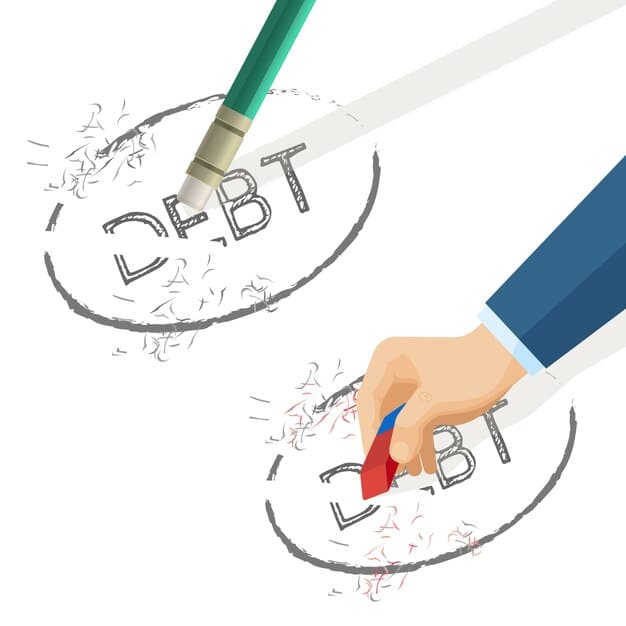Orphan Drug Tax Credit: Incentives for Rare Disease Treatment in 2025

The Orphan Drug Tax Credit offers significant financial incentives to pharmaceutical companies for developing treatments for rare diseases, encouraging innovation and addressing unmet medical needs, particularly with potential updates in 2025.
The Orphan Drug Tax Credit: Incentives for Developing Treatments for Rare Diseases in 2025 is a crucial component of the US healthcare ecosystem, encouraging pharmaceutical firms to invest in the creation of therapies for rare diseases.
Understanding the Orphan Drug Tax Credit
The Orphan Drug Tax Credit (ODTC) is a tax incentive designed to encourage pharmaceutical companies to develop treatments for rare diseases or conditions, often referred to as “orphan diseases.” These are diseases that affect a relatively small number of people, making it less economically attractive for companies to invest in their treatment.
This tax credit plays a vital role in promoting research and development (R&D) in areas that might otherwise be neglected. The credit helps offset the high costs and risks associated with developing new drugs, particularly for small patient populations.
Defining Orphan Diseases
An orphan disease is generally defined as a condition affecting fewer than 200,000 people in the United States. Because of the limited patient base, developing treatments for these diseases can be financially challenging for pharmaceutical companies.
Purpose and History of the ODTC
The Orphan Drug Act of 1983 established the ODTC to address this challenge. By offering financial incentives, the Act aimed to stimulate investment in the development of orphan drugs. The ODTC helps to overcome the economic disincentives that previously hindered the development of treatments for rare diseases.
- The Orphan Drug Act incentivizes pharmaceutical companies to invest in rare diseases treatments.
- It provides tax credits to offset high R&D costs.
- It addresses a significant gap in healthcare by focusing on neglected diseases.
- The ODTC leads to the development of life-saving and life-improving treatments.
In conclusion, the ODTC has been instrumental in fostering the development of treatments for rare diseases by providing financial support to pharmaceutical companies, thereby improving the lives of many patients who would otherwise have limited or no treatment options.
How the Orphan Drug Tax Credit Works
The Orphan Drug Tax Credit: Incentives for Developing Treatments for Rare Diseases in 2025 functions as a direct financial incentive for pharmaceutical companies engaged in the clinical testing of orphan drugs. It reduces the financial risk associated with drug development.
By understanding the specifics of how the tax credit is calculated and claimed, companies can better leverage this benefit to support their R&D efforts. This encourages more investment in finding innovative treatments for rare diseases.

Calculation of the Tax Credit
The ODTC generally provides a tax credit equal to 25% of qualified clinical testing expenses. These expenses typically include the costs associated with conducting clinical trials needed to demonstrate the safety and effectiveness of a potential orphan drug.
Eligible Expenses
Qualified clinical testing expenses must meet certain criteria to be eligible for the tax credit. They must be related to testing conducted after the drug has been designated as an orphan drug by the Food and Drug Administration (FDA). Additionally, the testing must be aimed at securing FDA approval for the orphan drug.
Claiming the Tax Credit
To claim the ODTC, pharmaceutical companies must complete and file IRS Form 8961, Credit for Qualified Clinical Testing Expenses for Rare Disease or Condition. The form requires detailed information about the qualified clinical testing expenses and the orphan drug designation. The company must demonstrate that the expenses meet all the necessary requirements.
- The ODTC covers 25% of qualified clinical expenses.
- Companies must complete and file IRS Form 8961 to claim the credit.
- Detailed record-keeping is required to justify claimed expenses.
- The ODTC aims to mitigate financial risks in orphan drug development.
In summary, the ODTC significantly reduces the financial burden on pharmaceutical companies undertaking clinical testing for orphan drugs. Proper documentation and compliance with IRS requirements are essential for successfully claiming the tax credit.
The Impact of the Orphan Drug Tax Credit on Drug Development
One of the most important ways that the Orphan Drug Tax Credit: Incentives for Developing Treatments for Rare Diseases in 2025 helps is by boosting the number of new medicines being developed. It makes it more feasible for companies, especially smaller ones, to work on treatments for rare conditions.
Thanks to the ODTC, more patients have access to treatments that can significantly improve their lives. This not only addresses unmet medical needs but also encourages ongoing research and innovation in the pharmaceutical industry.

Increased Development of Orphan Drugs
Since the implementation of the Orphan Drug Act, there has been a significant increase in the development and approval of orphan drugs. Before the Act, very few treatments were available for rare diseases. The ODTC has turned that around.
Benefits for Patients with Rare Diseases
The ODTC has led to the development of life-saving and life-improving treatments for patients with rare diseases. Previously, many of these patients had limited or no treatment options. These new treatments may significantly enhance their quality of life.
Economic Impact
The ODTC incentivizes companies to invest in cutting-edge research, leading to economic growth and job creation. This investment benefits the healthcare industry and promotes overall economic prosperity.
- The ODTC drives investments in cutting-edge medical research.
- It has led to significant job creation in the healthcare industry.
- ODTC’s success proves that financial incentives can address critical healthcare needs.
- It reduces economic strain on patients and healthcare systems.
In conclusion, the Orphan Drug Tax Credit has a profound impact on drug development, benefiting patients, the healthcare industry, and the economy. By encouraging the development of orphan drugs, the ODTC addresses unmet medical needs and enhances the well-being of patients with rare diseases.
Potential Changes to the Orphan Drug Tax Credit in 2025
Policy changes and adjustments to the Orphan Drug Tax Credit: Incentives for Developing Treatments for Rare Diseases in 2025 could significantly impact the orphan drug development landscape. Pharmaceutical companies need to stay informed about these potential changes.
Staying updated ensures they can maximize the benefits of the ODTC and continue to invest in treatments for rare diseases. A clear understanding of any new guidelines is critical for maintaining investment in this crucial area and for ensuring that patients continue to benefit from innovative therapies.
Legislative Updates
Legislative updates and amendments to the Orphan Drug Act could affect the scope and value of the ODTC. Congress may introduce changes to the eligibility criteria, the percentage of the tax credit, or the definition of qualified clinical testing expenses.
Impact on Pharmaceutical Companies
Any changes to the ODTC could impact the financial incentives for pharmaceutical companies to invest in orphan drug development. A reduction in the tax credit, for example, might discourage companies from pursuing treatments for rare diseases, particularly for ultra-rare conditions.
Future of Orphan Drug Development
The future of orphan drug development depends on the continued availability of incentives like the ODTC. Uncertainty surrounding the tax credit may impact long-term investment decisions.
- Stay informed about potential legislative changes to the ODTC.
- Policy shifts to the ODTC can affect investments in rare disease treatment.
- Monitor how adjustments to the ODTC can impact drug development.
- The ODTC’s future can impact healthcare accessibility for patients.
In summary, keeping abreast of potential changes to the Orphan Drug Tax Credit is crucial for pharmaceutical companies to make informed decisions about their investments in orphan drug development. Stakeholders need to advocate for the continued support of incentives that promote innovation and address unmet medical needs.
Strategies for Optimizing the Orphan Drug Tax Credit
To maximize the benefits of the Orphan Drug Tax Credit: Incentives for Developing Treatments for Rare Diseases in 2025, pharmaceutical companies should implement several key strategies. These strategies help ensure compliance, optimize eligible expenses, and leverage the tax credit effectively.
By adopting these best practices, companies can enhance their R&D efforts and bring more treatments to market for patients with rare diseases. Such a proactive approach ensures they fully leverage the incentives available to them.
Comprehensive Documentation
Maintaining comprehensive documentation of qualified clinical testing expenses is critical for supporting claims for the ODTC. This documentation includes detailed records of all expenses related to clinical trials, such as personnel costs, research materials, and contract services.
Collaboration with Experts
Engaging tax professionals and consultants who are knowledgeable about the ODTC can help companies navigate the complexities of the tax credit. These experts can assist with identifying eligible expenses, preparing the necessary documentation, and ensuring compliance with IRS regulations. This ensures that claims are accurate and optimized.
Strategic Planning
Integrating the ODTC into strategic planning can help pharmaceutical companies optimize their R&D investments. By considering the potential tax benefits, companies may be more willing to pursue projects targeting rare diseases.
- Maintain proper and detailed documentation of the ODTC process.
- Collaborate with tax experts for accurate ODTC application.
- Integrate the ODTC into strategic planning for maximum benefit.
- Stay updated on regulation changes to ensure correct data reporting.
In conclusion, optimizing the Orphan Drug Tax Credit requires a combination of careful documentation, collaboration with experts, and strategic planning. By implementing these strategies, pharmaceutical companies can maximize the benefits of the ODTC and support the development of treatments for rare diseases.
The Future Outlook for Rare Disease Treatment and the ODTC
The outlook for rare disease treatment and the Orphan Drug Tax Credit: Incentives for Developing Treatments for Rare Diseases in 2025 is promising, but several factors will shape its future. Continued innovation, evolving regulatory landscapes, and policy adjustments will all play a role in determining the trajectory of orphan drug development.
Understanding these trends is essential for pharmaceutical companies, policymakers, and patient advocacy groups. Staying proactive ensures that the ODTC continues to effectively incentivize the development of treatments for rare diseases and meets the needs of patients.
Continued Innovation
Ongoing advancements in biotechnology, genomics, and personalized medicine hold the potential to transform the treatment of rare diseases. These advancements may lead to the development of more targeted therapies and improved diagnostic tools, enhancing the efficacy of orphan drugs.
Regulatory and Policy Considerations
Regulatory and policy considerations, such as changes to the FDA approval process and adjustments to the ODTC, will significantly impact the orphan drug landscape. Streamlined regulatory pathways and continued financial incentives can facilitate the development and approval of new treatments.
Patient Advocacy and Awareness
Increased patient advocacy and awareness of rare diseases can drive further investment in orphan drug development. Patient advocacy groups play a crucial role in raising awareness, advocating for policy changes, and supporting research efforts.
- Biotech, genomics and personalized medicine advances can improve ODTC.
- Streamlined treatments and continued incentives can boost approval.
- Patient groups can drive support through increased awareness.
In summary, the future of rare disease treatment and the Orphan Drug Tax Credit is dependent on continued innovation, supportive regulatory policies, and robust patient advocacy. By fostering a collaborative environment, stakeholders can ensure that the ODTC remains a valuable tool for incentivizing the development of life-changing treatments for patients with rare diseases.
| Key Point | Brief Description |
|---|---|
| 💰 ODTC Overview | Tax credit to incentivize development for rare diseases. |
| 🧪 Impact on Development | Leads to more orphan drugs and benefits to patients. |
| 📅 Potential Changes in 2025 | Policy updates could affect eligibility and credit value. |
| 📈 Strategies for Optimization | Documentation, expert collaboration, and strategic planning. |
Frequently Asked Questions
▼
The ODTC aims to financially incentivize pharmaceutical companies to develop treatments for rare diseases by offering tax credits for qualified clinical testing expenses.
▼
Qualified expenses usually include costs related to clinical trials necessary to demonstrate the safety and effectiveness of a drug for treating rare diseases.
▼
Legislative updates could alter the tax credit’s scope, eligibility, and percentage, impacting incentives for companies working on treatments.
▼
Primarily, pharmaceutical companies benefit by reducing financial risks, while patients gain access to more treatments for otherwise neglected rare diseases.
▼
Comprehensive documentation is required to ensure compliance with the IRS and validate the expenses claimed, optimizing the chances of credit approval.
Conclusion
In conclusion, the Orphan Drug Tax Credit is a vital incentive that encourages pharmaceutical companies to invest in the development of treatments for rare diseases. By understanding how the ODTC works and potential changes in 2025, stakeholders can best navigate the evolving landscape of orphan drug development and work towards improving the lives of patients with these conditions.





